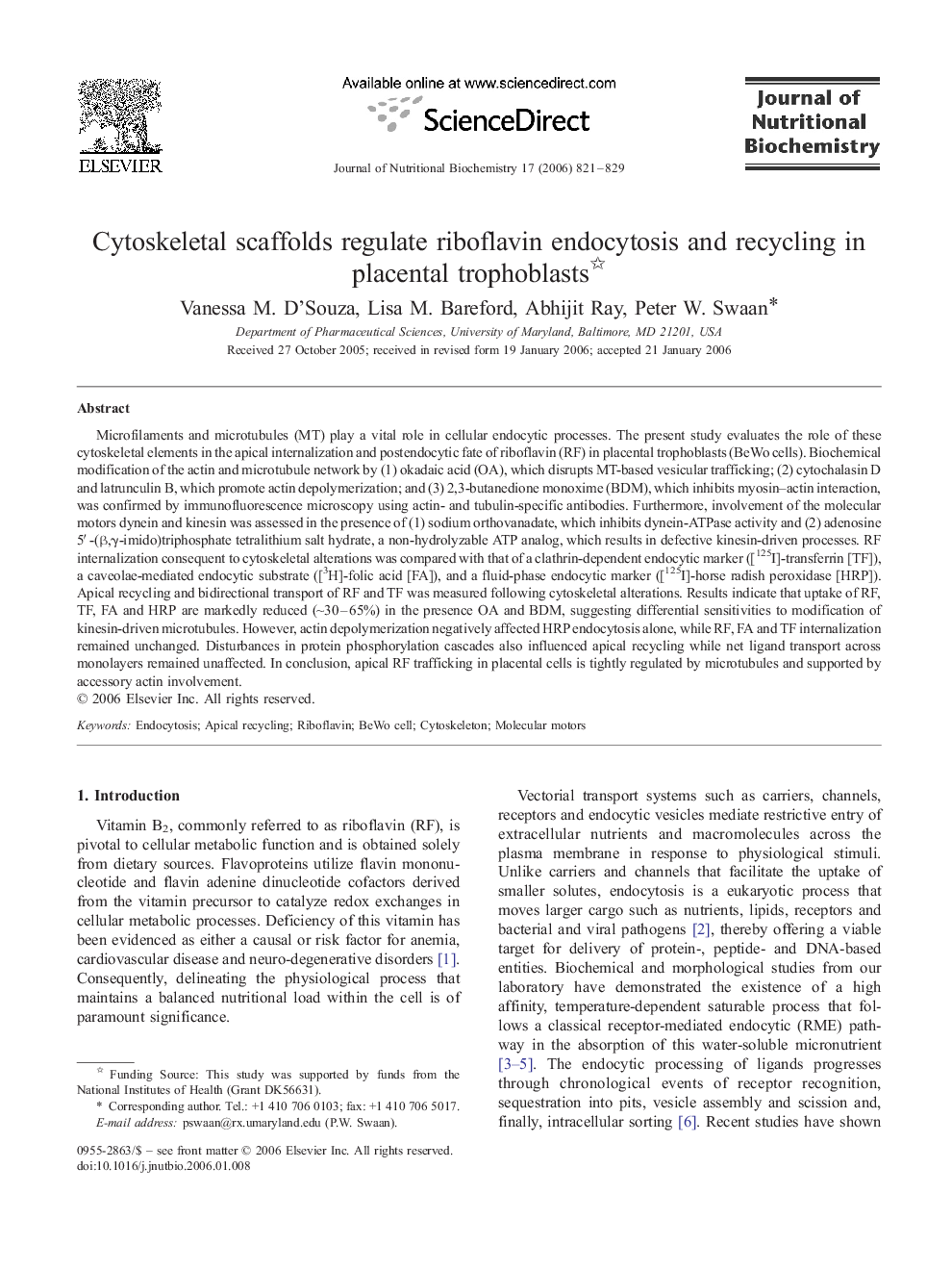| Article ID | Journal | Published Year | Pages | File Type |
|---|---|---|---|---|
| 1990534 | The Journal of Nutritional Biochemistry | 2006 | 9 Pages |
Microfilaments and microtubules (MT) play a vital role in cellular endocytic processes. The present study evaluates the role of these cytoskeletal elements in the apical internalization and postendocytic fate of riboflavin (RF) in placental trophoblasts (BeWo cells). Biochemical modification of the actin and microtubule network by (1) okadaic acid (OA), which disrupts MT-based vesicular trafficking; (2) cytochalasin D and latrunculin B, which promote actin depolymerization; and (3) 2,3-butanedione monoxime (BDM), which inhibits myosin–actin interaction, was confirmed by immunofluorescence microscopy using actin- and tubulin-specific antibodies. Furthermore, involvement of the molecular motors dynein and kinesin was assessed in the presence of (1) sodium orthovanadate, which inhibits dynein-ATPase activity and (2) adenosine 5′-(β,γ-imido)triphosphate tetralithium salt hydrate, a non-hydrolyzable ATP analog, which results in defective kinesin-driven processes. RF internalization consequent to cytoskeletal alterations was compared with that of a clathrin-dependent endocytic marker ([125I]-transferrin [TF]), a caveolae-mediated endocytic substrate ([3H]-folic acid [FA]), and a fluid-phase endocytic marker ([125I]-horse radish peroxidase [HRP]). Apical recycling and bidirectional transport of RF and TF was measured following cytoskeletal alterations. Results indicate that uptake of RF, TF, FA and HRP are markedly reduced (~30–65%) in the presence OA and BDM, suggesting differential sensitivities to modification of kinesin-driven microtubules. However, actin depolymerization negatively affected HRP endocytosis alone, while RF, FA and TF internalization remained unchanged. Disturbances in protein phosphorylation cascades also influenced apical recycling while net ligand transport across monolayers remained unaffected. In conclusion, apical RF trafficking in placental cells is tightly regulated by microtubules and supported by accessory actin involvement.
